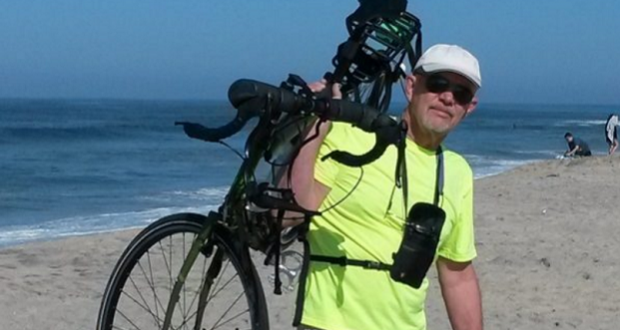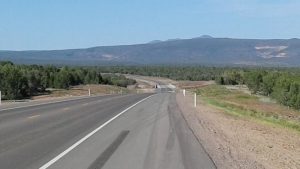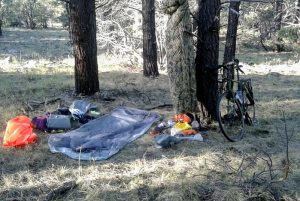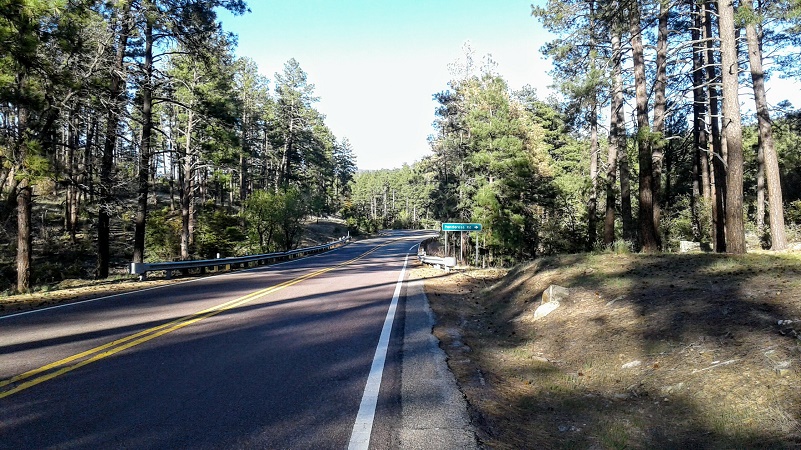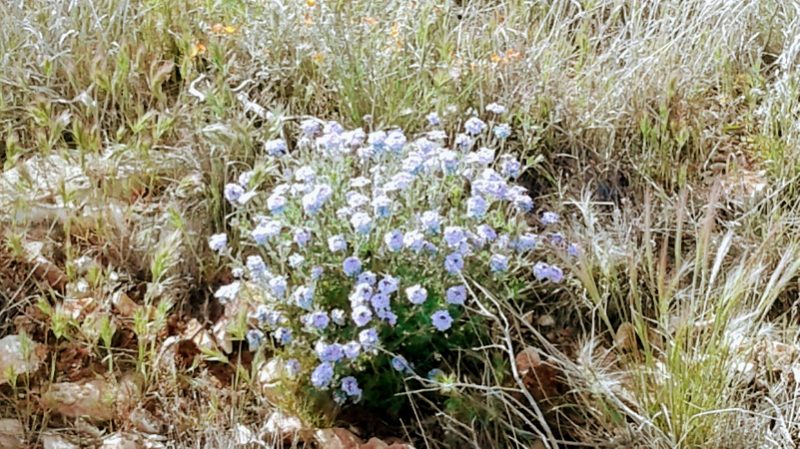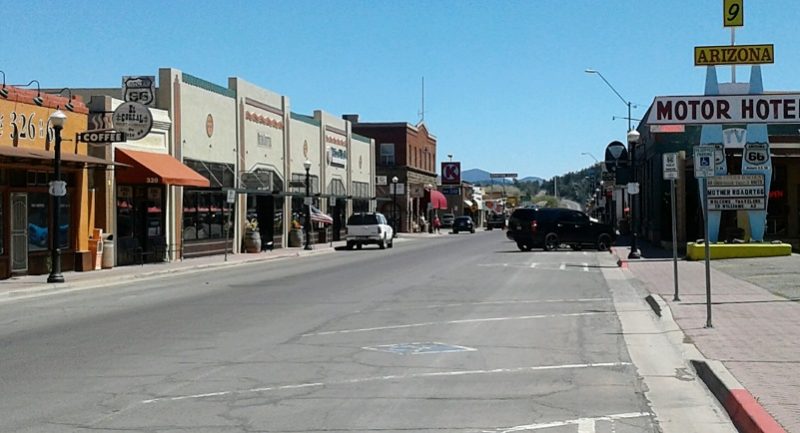Editor’s Note: Here’s our second report from experienced climber, world traveler and longtime Oakhurst resident Bob Kaspar, who is riding coast to coast from California to his hometown near Boston, Massachusetts.
Last week, Bob left town with his 14-ounce tent and little else, and posted from the road, Biking Across America: Bob Kaspar Goes Home.
This week, we pick up with Bob as he rides into Arizona.
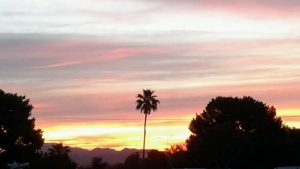 Leaving Blythe, California, after a short layover, I cross the Colorado River and head into the Sonoran Desert towards Flagstaff, Arizona, 260 miles away and 7,000 feet higher.
Leaving Blythe, California, after a short layover, I cross the Colorado River and head into the Sonoran Desert towards Flagstaff, Arizona, 260 miles away and 7,000 feet higher.
I crossed the Colorado River just at sunrise.
The Sonoran Desert is also characterized by vast communities of retirees who drive dune buggies. The fellow on the right here said he used to be a bicycle racer. He seemed to know a lot about it. I believed him.
“Nothing in life is so exhilarating as to be shot at without result.” – Winston Churchill
After this photo I had dinner in Ash Fork and began the long climb to Williams on I-40.
On a recommendation from a local, I exited at Welch Road and began to look for a campsite. I walked the bike down the dirt road in the dark, scanning for a site with my headlamp.
Suddenly, on my right and out of the dark, came the unmistakable sound of a large caliber handgun accompanied by the zip-click sound of the bullet passing nearby.
Most of us have the tendency to believe that most situations are basically normal. Psychologists call this “normalcy bias.” It’s essentially the opposite of reflexive hysteria. So, while I am very familiar with handguns and their various sounds, there was simply no context in which to believe that this was actually a gunshot. It was the dark of night in the middle of the forest and nobody was around.
I concluded that, although it was unmistakably a gunshot, it must have instead been a backfire from one of the trucks on I-40 about 200 yards distant. I continued on down the dirt road and a couple of hundred feet further, I came upon a camper and a trailer.
At this point, it became apparent to me that this was more of a dirt parking lot and not the small grassy patch that I had been looking for. I turned around and started back out the way I had come in. As I approached the spot where I had heard a “backfire,” a flashlight now appeared in the forest and began to approach the road.
The light was bright and I could not see who was behind it. A voice from behind the light said “You [expletive] with my mobile home and I’m going to blow your [expletive] head off.”
This was repeated several times and all I could determine was that it was perhaps a middle-aged male and perhaps he was drunk. I looked into the light and wondered if I would see a muzzle flash from behind it. Sometimes the only thing you can do in a situation of disadvantage is try to control the aggressor with conversation.
I asked him, “Are you okay?”
This seem to confuse him. I asked him if he had trouble with people messing with his motor home. His responses were muddled and incongruous but at least he was responding to me and, as long as he was responding to me, he was having less time to calculate.
It occurred to me that, as I approached him on the road, all he could see was my headlamp and so as we spoke I began to move slowly down the road and slightly away from him, hoping he could see my cycling gear, numerous reflectors and goofy cycling helmet — and hopefully realize that I didn’t look like someone would invade his camp to steal diesel fuel.
Maybe this worked. I don’t know, but finally I said “I’m going to leave now. I hope you’re feeling better,” and headed down the road hoping I didn’t hear any sharp sounds from behind me.
I went back to the interstate on-ramp and dialed 911. About 20 minutes later, several units from the Coconino County Sheriff’s Department arrived on scene. The only description I could give them was the vaguest of vague impressions that the guy was wearing a housecoat.
They then went and engaged the person, who was apparently living in a mobile home that I could not see as I walked down the road. He, of course, denied everything but was, in fact, wearing a bathrobe and possessed a large caliber handgun.
The deputies told me without elaboration that they have had numerous contacts with this individual in the past and that he was itinerant and had set up camp there for the past several summers. He was convinced that people were stealing from him and so had set up a perimeter of motion detectors around his campsite, on public land, which he was then presumably defending with the threat of lethal force.
Nonetheless, the fact pattern was difficult as I had actually seen nothing and there were no other witnesses so, absent some sort of admission from him, developing probable cause for arrest would have been difficult. I spent the better part of the next morning with the Forest Service law enforcement officers in an attempt to see if any administrative action could be taken to remove him from the land and so as to not expose anyone else to the danger. At minimum, they will be removing him from the forest.
Hope is a wonderful sentiment, but it’s a very poor tactic. I reflect on the irony of giving reassuring words to the flashlight in the night from behind which I was half expecting a muzzle flash at any moment and knowing that, had I been armed with anything other than distracting banter, there would have been no doubt and no hesitation as to what I would have done.
After my encounter with whomever that was (I’ll find out his identity when I receive the sheriff’s incident report), I continued up the grade to find another campsite. Before long I realized that I had reached the top of the grade without resting once. I guess adrenaline is a wonderful thing.
I found a nice campsite a bit further from the road this time and slept the sleep of the just: the just plain tired.
The next morning in Williams I was chatting with the convenience store clerk about the incident the night before when she said “Welch Road, that’s where there was an execution killing two years ago.”
Perfect.
Here’s what did not go wrong along the way:
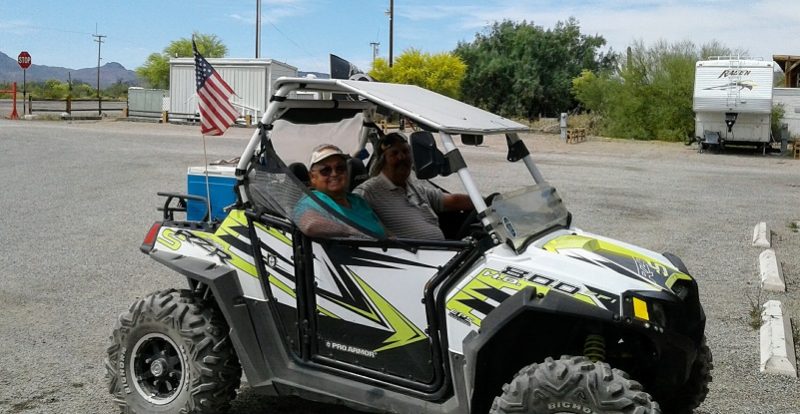
The Sonoran Desert is also characterized by vast communities of retirees who drive dune buggies. The fellow on the right said he used to be a bicycle racer. He seemed to know a lot about it. I believed him.

Nearing sunset between Aquila and Congress Arizona find dust begin to blow across the road: a mineral ground fog.

Early morning and time to begin the long climb out of the desert from Congress to Yarnell.
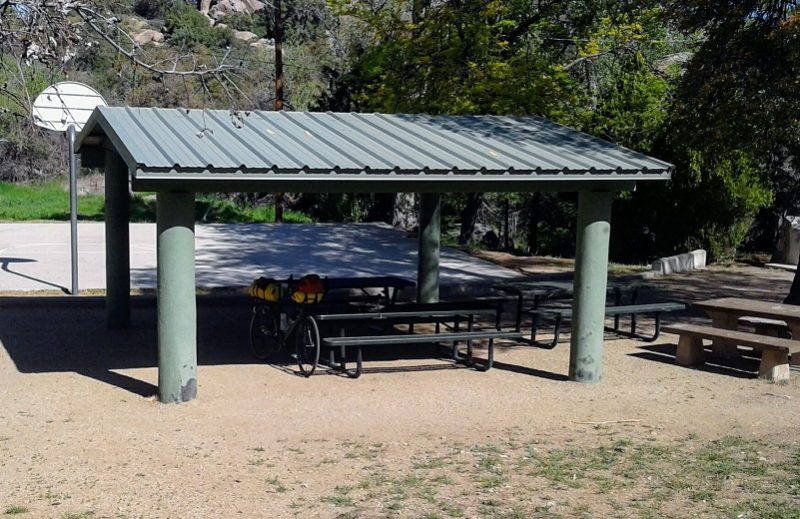
I’ve really begun to appreciate these small town parks. They are generally established on donated land and maintained on a volunteer basis.
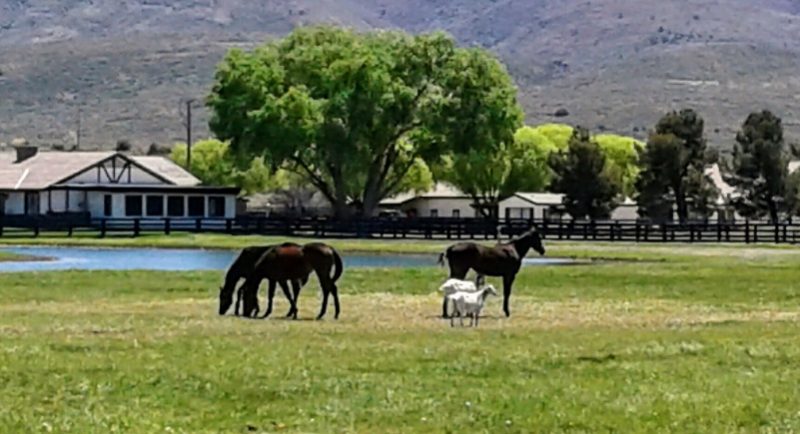
A classic pastoral scene as horses and goats frolic at one of the many large ranches in Peeples Valley between Yarnell and Willhot.
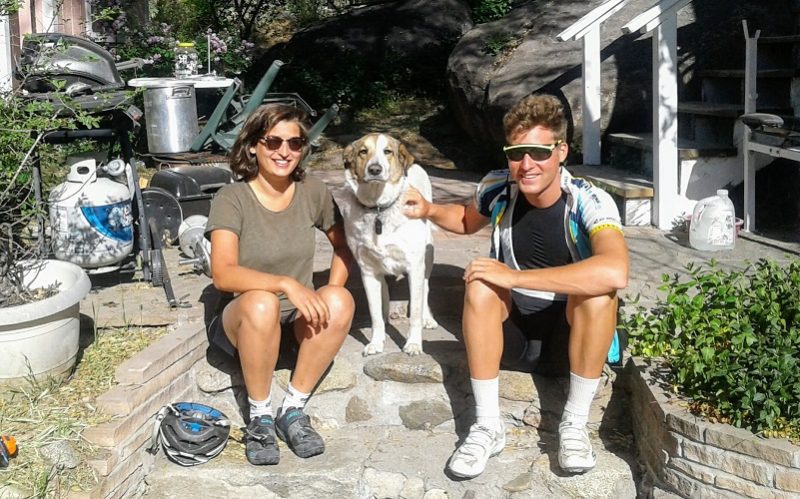
For a couple of days I traveled intermittently with Belgian cyclists Jiska and Jiestsen. In Prescott we were hosted by fellow cyclist Russ and his most agreeable dog Gulliver. Central Arizona is beautiful and infested with cyclists.
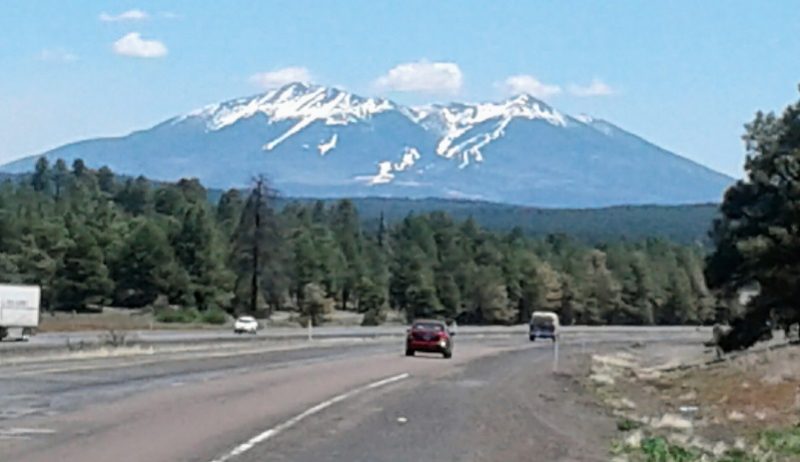
Solitary and magnificent, the San Francisco peaks tower in the distance as I approach Flagstaff, AZ.
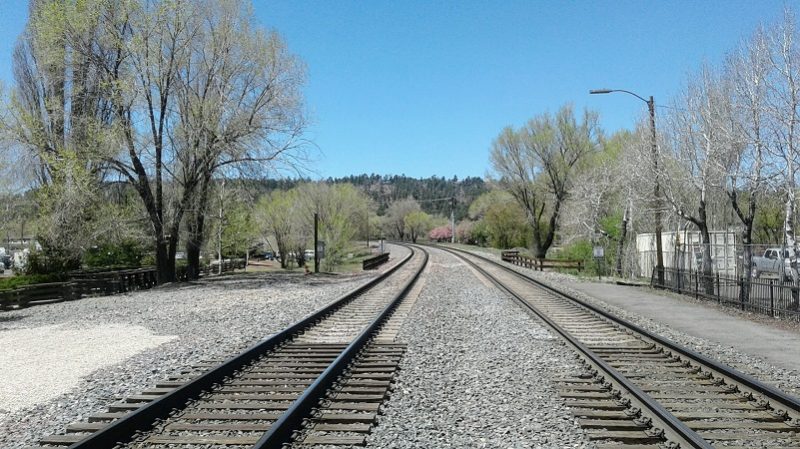
Flagstaff, one of the many stops along the way in a land still bound together by impossibly thin ribbons of steel.
Here is last week’s post:

